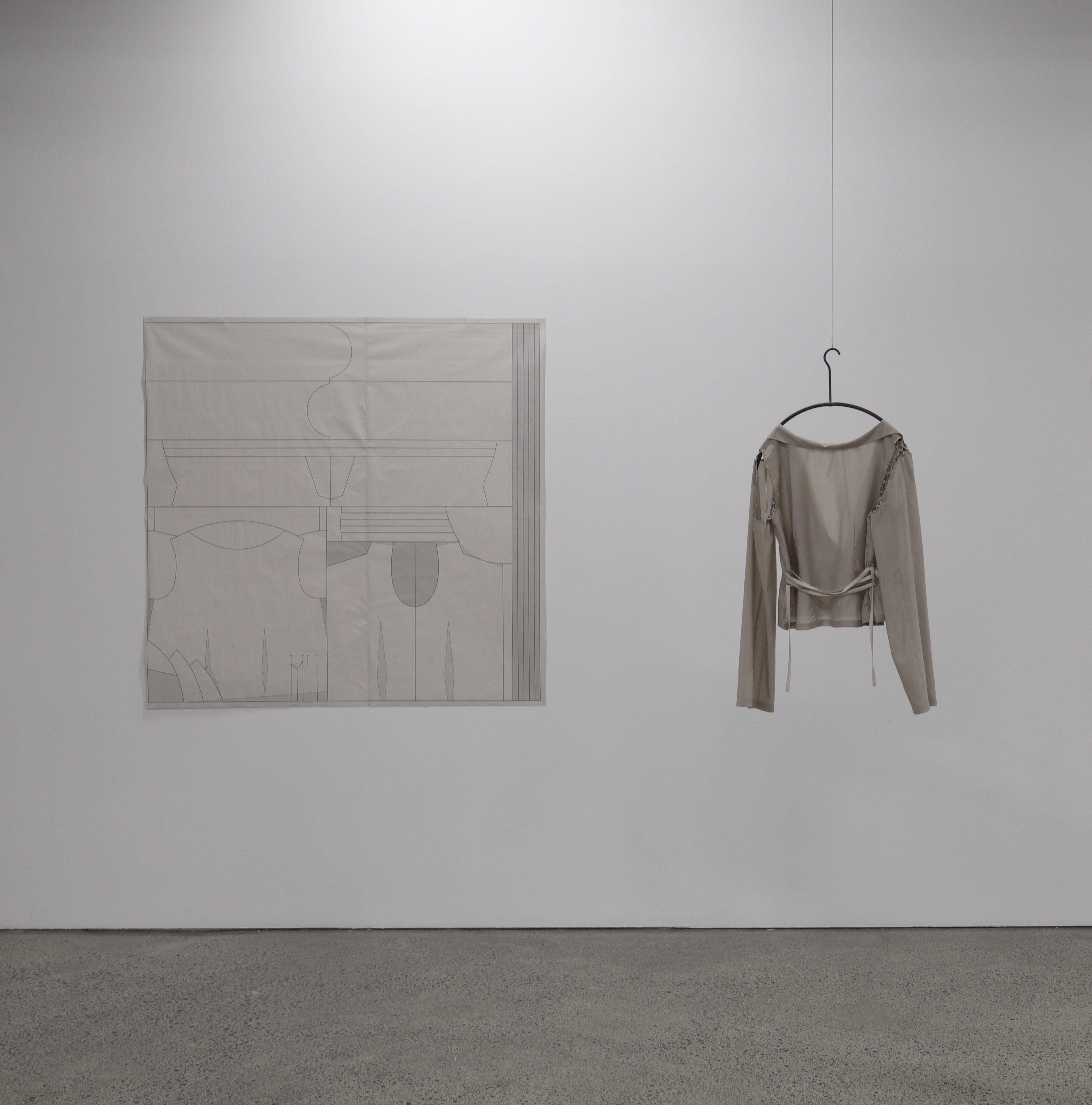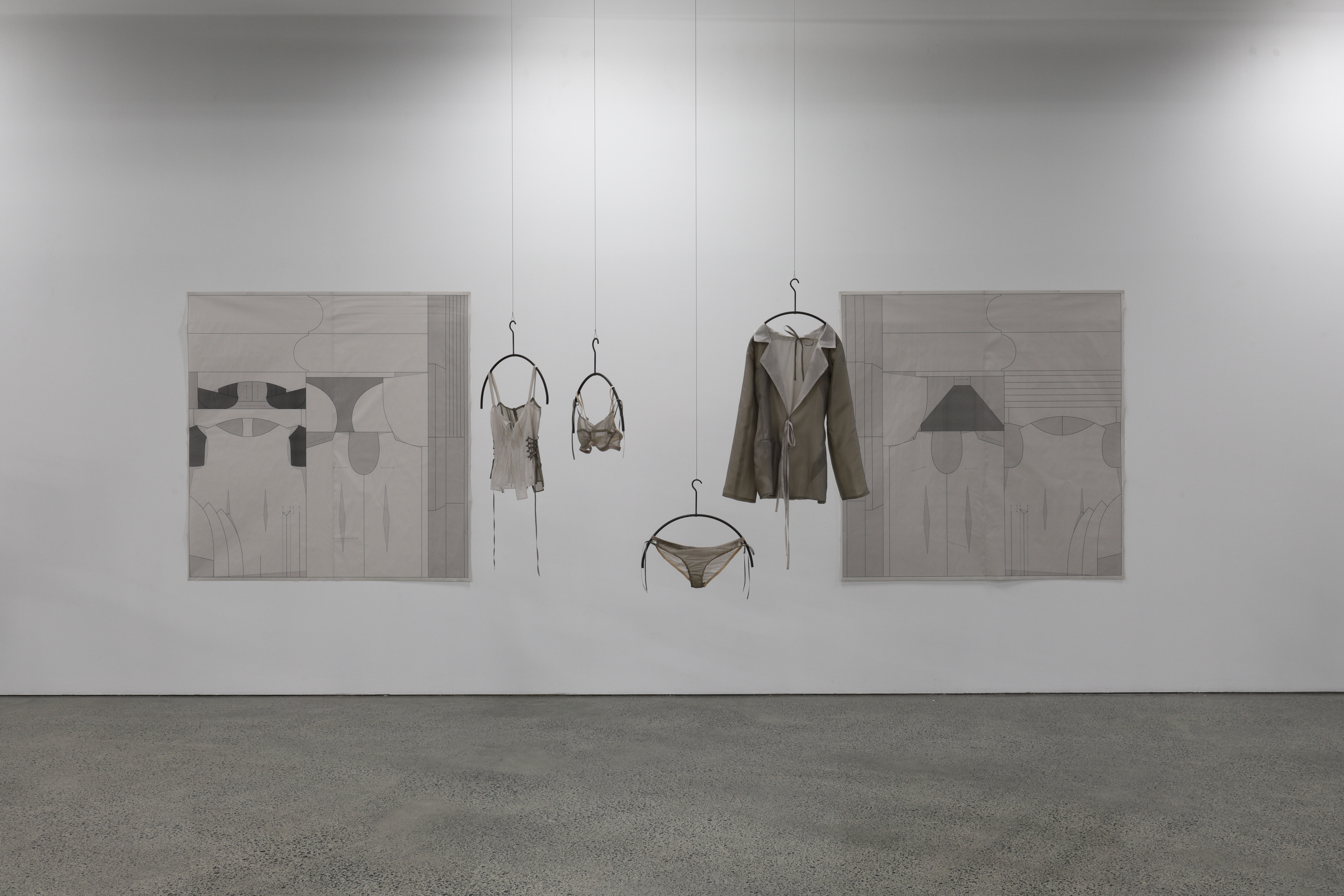
Encapsulation Pattern Set
Examining the issue of material offcut waste within fashion production systems, Modes of Making: Adaptive Zero Waste Patternmaking utilises craftsmanship techniques and alternative design frameworks. Zero waste patternmaking reduces textile waste through a puzzling together of pattern pieces during the making process. The collection identifies the underpinnings of zero waste patternmaking as criteria setting, adaptability considerations (in patternmaking and styling stages) and side strip waste solutions (in strip ties or grid patterns for secondary garments). The capacity to adapt patterns, embed shapes and curved lines, produce complex forms like undergarments, encapsulate irregular waste shapes, and adaptively utilise linear waste is demonstrated. In the cases where a fabric is wider than the pattern, the pattern is reflectively edited using strip waste solutions to cater to all dimensions of waste.
Using a circular collection model, each pattern uses up the entirety of waste produced within the garment (or set of garments) it produces. The Encapsulation collection articulates assorted zero waste patternmaking approaches:
- Pattern One - Single garment zero waste pattern: makes Cropped Encapsulation Jacket. Side strip waste solution: strip ties.
- Patterns Two and Three – Multiple garment zero waste pattern [main layer and lining layer]: makes Encapsulation Jacket, Bra & Knicker. Side strip waste solution: Strip Cut Bodice.
- Pattern Four – Strip cut grid pattern: Strip Cut Dress. Side strip waste solution: strip ties.




